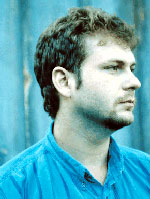Once again, I greatly enjoyed this year's ESRI Federal User Conference - I was able to make it to several sessions Thursday and Friday... Perhaps will post more on this, as time permits.

Once again, I greatly enjoyed this year's ESRI Federal User Conference - I was able to make it to several sessions Thursday and Friday... Perhaps will post more on this, as time permits.


For the last few days I have been working on efforts to help Haiti earthquake response - part of this is mapping Haiti via OpenStreetMap. Currently, useful maps of Haiti are few and far between, in some case there are detailed maps for parts of the country and cities like Jacmel, but which are print maps (no digital edition exists), in many cases many decades old and outdated, in other instances the only maps which exist are small-scale, with limited detail. Commercial map platforms like Bing Maps, Google Maps and Yahoo vary greatly in their detail as well, and update cycles are slow - however, here, OpenStreetMap has been able to rapidly respond and provide very speedy and robust updates, to include capturing data about collapsed buildings, and so on.
Mikel Maron captures the speed and effectiveness of OpenStreetMap with these two screenshots of Port-Au-Prince, just before the earthquake and just after:
before:
after:
I would encourage any others who have time to contribute to get involved in this effort as well - editing can be done directly in OpenStreetMap via the 'edit' tab, which opens a web-based tool called Potlatch - or, a number of other tools are available as well. (You will need to register an account in order to edit - feel free to connect with me there as well - http://www.openstreetmap.org/user/Dave%20Smith). The OpenStreetMap WikiProject Haiti page provides a lot of good information and frequent updates. A number of data sources have been assembled, together with fresh post-earthquake imagery generously donated by companies like DigitalGlobe.
For folks who are interested in more robust tools, I primarily use Merkaartor which runs best on Windows platforms - others favor JOSM which is Java-based and runs on any platform supporting Java.
With either of these, you should be able to use the download function to navigate to an area of Haiti (select a relatively small area) and then download the OSM data
Some have wrestled with getting the various available imagery and map services to work properly in JOSM and Merkaartor - they are both a bit clunky about accessing WMS servers - I can offer some of my tips gleaned from a little debugging using Fiddler2: For Merkaartor, use Tools -> WMS Servers Editor and create a new entry with the following URL: http://maps.geography.uc.edu/cgi-bin/mapserv?map=/home/cgn/public_html/maps/mapfiles/haiti.map&version=1.1.0&SERVICE=WMS&REQUEST=GetMap? and show capabilities to access the DigitalGlobe CrisisEvent imagery (DG_crisis_event_service), select EPSG:4326 (only option available) and image/png and you should be able to go from there. If there is no image layer showing, go to Layers -> Add new image layer, and then right-click on the newly added image layer and select your newly-added WMS server for DigitalGlobe.
Digitization tasks are fairly intuitive - tools allow you to draw points, lines and polygons, as well as to create relations which allow multiple entities to be grouped together - however the absolute key to success is in proper use of tags to provide attribute values for any entities being created. These are generally intuitive as well, e.g. tag of highway, value of residential to turn a generic line into a residential road. It also helps to look at tagging of existing features, and to familiarize yourself with the features list - the OpenStreetMap wiki is searchable and quite useful. Finally, as terms of using the DigitalGlobe imagery, any data entered using their imagery should also be tagged with source=digitalglobe.
One of the other projects I have been working on is development of a set of tags that would be useful for emergency responders, relief and aid efforts - for this, I have started a wiki page http://wiki.openstreetmap.org/index.php?title=Humanitarian_OSM_Tags- any comments and thoughts can be added to the wiki page.

Recently one of my little side pursuits has been playing with OpenStreetMap. I had tinkered with it a little bit some time ago, and decided to revisit it.
 And have quickly been going to something that looks like this:
And have quickly been going to something that looks like this: Here, I've been using orthophoto WMS services and other datasets for correcting streets and railroads, digitizing streams, putting in building footprints, parks, trails and amenities, and in just a short time am rapidly going to a useful and reasonably attractive map (note that this is still in progress). Further, the data can also be reused in a variety of ways, such as in Open Source routing services, using custom styling and symbology and so on.
Here, I've been using orthophoto WMS services and other datasets for correcting streets and railroads, digitizing streams, putting in building footprints, parks, trails and amenities, and in just a short time am rapidly going to a useful and reasonably attractive map (note that this is still in progress). Further, the data can also be reused in a variety of ways, such as in Open Source routing services, using custom styling and symbology and so on.